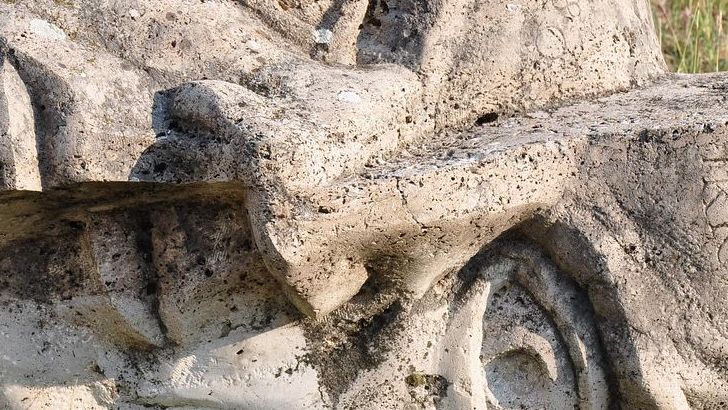The World’s Only Public Diamond Mine Sits in Small Town Arkansas

Picture this: you’re holding what looks like a candy wrapper, but it turns out to be a 3.81-carat diamond worth thousands of dollars. That’s exactly what happened to David DeCook from Minnesota when he visited Arkansas in April 2025. David DeCook, a regular visitor to Arkansas’ Crater of Diamonds State Park from Stewartville, MN, recently spotted a glimmering 3.81-carat brown diamond while visiting the park with his family. It is the largest diamond registered so far this year. About an hour after entering the park’s 37.5-acre plowed diamond search area on Monday, April 21, DeCook made his way down a hill south of the park’s south wash pavilion, where he spotted the diamond almost immediately. He described seeing what he at first thought was a candy wrapper. This isn’t some lottery ticket fantasy—it’s the reality at Arkansas’s Crater of Diamonds State Park, where fortune hunters from around the globe come to dig for treasure. The only place in the world where the public can search for real diamonds in their original volcanic source, Crater of Diamonds is a one-of-a-kind experience that brings people from all over the world to Murfreesboro, Arkansas.
How a French Tourist Struck It Rich in Arkansas

Sometimes the best discoveries happen by accident. A spur-of-the-minute detour led to a “real great adventure” for a Parisian visitor to the United States. Julien Navas, who was visiting the US from France to see the launch of the first US moon landing mission in decades from Cape Canaveral, Florida, also ventured to New Orleans. Along the way, learned about the Crater of Diamonds State Park in Arkansas, according to a news release from Arkansas State Parks. On January 11, Navas arrived at the park, bought his ticket, and rented a basic diamond hunting kit, according to the news release. What happened next was pure magic. I got to the park around nine o’clock and started to dig,” Navas said in the release. The 7.46 carat diamond discovered by Julien Navas, of Paris, France, upon his visit to the Crater of Diamonds State Park in Arkansas on January 11, 2024. The stone is deep chocolate brown and rounded like a marble, according to the release, and is about the size of a candy gumdrop. His discovery became the eighth-largest diamond found at the park since it became a state attraction in 1972.
What Makes This Arkansas Field So Special

You might wonder what makes this particular piece of Arkansas dirt so valuable. The secret lies billions of years in the past. Lamproite is the lava that erupted from a volcano in this area billions of years ago. Howell said some Arkansans are clueless about the Crater of Diamonds State Park, much less that there used to be a volcano where it stands today. This ancient volcanic activity created something incredibly rare. Crater of Diamonds State Park is situated over an eroded lamproite volcanic pipe. The park is open to the public and, for a small fee, rockhounds and visitors can dig for diamonds and other gemstones. Unlike kimberlite formations where most diamonds are found, Arkansas sits on a lamproite formation—making it unique among diamond sources worldwide. The 37.5-acre field visitors can search represents the eroded surface of this ancient volcanic crater.
The Staggering Numbers Behind the Diamond Hunt

The statistics at Crater of Diamonds will blow your mind. In total, over 75,000 diamonds have been unearthed at the Crater of Diamonds since the first diamonds were discovered in 1906 by John Huddleston, a farmer who owned the land long before it became an Arkansas State Park in 1972. But here’s what makes it even more exciting: the rate of discovery hasn’t slowed down. On average, two diamonds are found per day by park visitors. Each year, the park hosts thousands of visitors and averages two diamonds found daily. In 2024 alone, park officials said, 548 diamonds have been registered by park guests in 2024, weighing more than 82 carats. They add an average of one to two diamonds are found each day. For perspective, that’s roughly 730 diamonds discovered by regular people just like you in a single year.
America’s Largest Diamond Came From This Very Field

The crown jewel of Arkansas diamond discoveries happened way back in 1924, and it still holds the record today. The largest diamond ever discovered in the United States was unearthed in 1924 during an early mining operation on the land that later became Crater of Diamonds State Park. Named the Uncle Sam, this white diamond with a pink cast weighed 40.23 carats. It was later cut into a 12.42-carat emerald shape. The Uncle Sam is now part of the Smithsonian’s mineral and gem collection and can be seen at the National Museum of Natural History. This massive gem proves that lightning can indeed strike twice in the same place. While most visitors find smaller stones, the potential for discovering something truly extraordinary keeps treasure hunters coming back year after year. The Uncle Sam Diamond serves as proof that Arkansas soil can produce world-class gems.
Recent Discoveries That Made Headlines

The park’s recent finds read like a treasure hunter’s dream journal. David Anderson, who lives in Murfreesboro, found a 3.29-carat brown diamond while wet-sifting soil in March 2023. The diamond was the largest found at the park since the 4.38-carat gem was found in September 2021, per Arkansas State Parks. Then came Jerry Evans, whose story sounds almost too good to be true. This time, the diamond was 4.87 carats in size. Jerry Evans found the diamond within the first 10 minutes of visiting Crater of Diamonds State Park with his girlfriend, according to a news release. Evans initially thought he’d picked up a piece of glass, only to learn weeks later from the Gemological Institute of America that he’d found a near-colorless diamond. Even children strike it rich here—seven-year-old Aspen Brown found a 2.95-carat golden brown diamond while celebrating her birthday at the park.
What It Actually Costs to Hunt for Diamonds

Here’s some great news: diamond hunting in Arkansas won’t break the bank. As of the most recent update to this post (Dec 2024), prices were $15 per adult and $7 for kids ages 6-12. That entrance fee gets you access to the entire 37.5-acre diamond search area for the whole day. Tools can be rented there for additional fees. Many visitors bring their own basic digging equipment, though the park rents everything you need if you prefer to travel light. Ticket purchases are all for a single day admission to the diamond search area. Admission fees do not include tool rental or other amenities. Compare that fifteen-dollar admission to buying a lottery ticket, and you’ll realize this gives you much better odds of striking it rich. Plus, even if you don’t find diamonds, you can keep any interesting rocks, minerals, or gemstones you discover during your search.
The “Finders Keepers” Policy That Changes Everything

Here’s what makes Arkansas truly special among diamond destinations worldwide. Visitors may keep any gemstone they find regardless of its value. There are no restrictions, no fees based on what you discover, and no complicated paperwork. Best of all, visitors get to keep any gems they find, regardless of value. “Finders-keepers” is the policy here at this unique state park located in southwest Arkansas near Murfreesboro. This policy creates an incredible democratization of wealth—a minimum-wage worker could potentially walk away with a gem worth more than a luxury car. Visitors to the park search a 37-acre field, the eroded surface of a volcanic crater, for a variety of rocks, minerals, and gemstones – and any rock or mineral you find is yours to keep. The park staff even provides free identification services to confirm whether your find is indeed a diamond.
Why Rain Makes Diamond Hunting Even Better

Smart diamond hunters check the weather forecast before visiting, but not for the reasons you might think. The day before DeCook’s visit, the park received nearly an inch of rain. According to Assistant Park Superintendent Waymon Cox, “April has been a very wet month at the park, with more than 12 inches of rain.” Rainfall causes erosion in the search area, which often leads to an increase in surface finds. Rain becomes your best friend when diamond hunting. “Many of the park’s largest diamonds are found on top of the ground,” said Assistant Park Superintendent Waymon Cox in a statement. “As rain falls in the search area, it washes away the dirt and uncovers heavy rocks, minerals, and diamonds near the surface.” This natural process means that some of the biggest discoveries happen right after storms, when Mother Nature does the hard work of uncovering treasures for you. Experienced visitors often plan their trips for the days following heavy rainfall.
Beyond Diamonds: Other Treasures Hiding in Arkansas Soil

While diamonds grab the headlines, they’re not the only treasures waiting in Arkansas dirt. In addition to diamonds, visitors may find semi-precious gems such as amethyst, agate, and jasper or approximately 40 other minerals such as garnet, phlogopite, quartz, baryte, and calcite. The geological diversity of this ancient volcanic site means every shovelful could reveal something interesting. Diamonds come in all colors of the rainbow: the three colors found here at the park are white, brown, and yellow. Amethyst, garnet, jasper, agate, quartz, and other rocks and minerals naturally occur here. Many visitors who don’t find diamonds still leave with bags full of beautiful specimens. The park staff provides free identification services for all rocks and minerals, not just diamonds, making every discovery an educational experience.
The Tourist Industry Built on Dreams

Arkansas has transformed diamond hunting into a surprisingly robust tourist industry. “Their diamonds are the main attraction, as for more than 50 years, the state park has drawn people from all over the world. “There’s nowhere else to go diamond hunting,” said Caleb Howell, Crate of Diamonds State Park superintendent. “This is the only diamond mine or diamond soil where the diamonds naturally occur… people can come and search and find their own diamond.” The park attracts international visitors, like Julien Navas from France, alongside families from across America. While not everyone will walk away with a diamond after their search, Howell said the park averages anywhere from 700 to 800 found diamonds a year. “It’s better than the lottery, but it’s still not the greatest,” Howell said. The adventure aspect drives much of the appeal—people come for the experience as much as the potential reward.
The Historical Discovery That Started It All

Every great treasure story needs an origin, and Arkansas’s diamond tale began with a farmer’s curiosity. John Wesley Huddleston, a farmer and sometime prospector, first found diamonds on the site in 1906. John Wesley Huddleston, a farmer and sometime prospector, first found diamonds on the site in 1906. Huddleston’s discovery sparked a diamond rush in Pike County. Like many accidental discoveries, Huddleston found two strange crystals on his property and had them identified, triggering a rush that would transform the region. Prospectors and fortune hunters rushed to the area, and soon the town of Kimberly developed to accommodate the influx of people. Within a few years of the discovery, all the land on top of Prairie Creek Pipe was in the hands of two rival companies, Arkansas Diamond Company and Ozark Diamond Mines Corporation. The boom and bust cycles that followed shaped the area’s history until Arkansas finally purchased the land in 1972, opening it to the public forever.
Science Behind the Sparkle

Understanding why diamonds exist in Arkansas requires a journey back through geological time. The diamonds formed hundreds of millions of years ago, some 60 to 100 miles underground. These precious stones traveled to the surface through violent volcanic eruptions that created the lamproite pipe now exposed at the park. Park prospectors search over a 37-acre plowed field, the eroded surface of an ancient, diamond-bearing volcanic pipe that is the world’s eighth largest in surface area. The unique geological conditions that formed and preserved this deposit make it incredibly rare worldwide. The lamproite diamond source is unusual, as almost all diamonds are mined from kimberlite formations and from alluvial deposits of diamonds weathered from that “hardrock” source. The most prominent lamproite diamond source is the Argyle diamond mine in Australia. This rarity explains why Arkansas remains the only place where the public can search for diamonds in their original volcanic source.
Modern Mining Meets Ancient Treasures

Today’s diamond hunting at the park blends old-fashioned prospecting with modern understanding of geology. You may bring your own mining equipment to search with (no battery-operated or motor-driven mining tools allowed), or rent tools from the park.Your diamond search begins here, where you can prepare for your visit by learning about diamonds and how to search for them. At the park’s visitor center, you can view real, uncut diamonds and interact with exhibits illustrating the area’s unique history and geology. At the Diamond Discovery Center, you can learn more about rocks and minerals found at the park and how to search for diamonds using various techniques. The park provides educational resources that dramatically improve your chances of success. The park staff provide free identification and certification of diamonds. Park interpreters present programs about diamonds, the geology of the gem-bearing diamond pipe, the park’s history, and its diversity of plant and animal species. This combination of education and hands-on experience creates an adventure that’s both thrilling and informative.
Dreams Worth Digging For

Arkansas’s Crater of Diamonds State Park represents something magical in our modern world—a place where anyone can literally strike it rich with nothing more than determination and a shovel. As of this publication, park staff have registered 220 diamonds in 2025, weighing more than 32 carats total. Whether you’re a French tourist on vacation, a Minnesota family looking for adventure, or a local Arkansas resident hoping to change your fortune, this remarkable place offers equal opportunity to everyone. The park proves that in a world of increasing complexity, sometimes the simplest dreams—digging in the dirt and finding treasure—remain the most compelling. With over 75,000 diamonds discovered since 1906 and new finds happening almost daily, Arkansas continues to sparkle with possibility for anyone willing to dig for their dreams.







